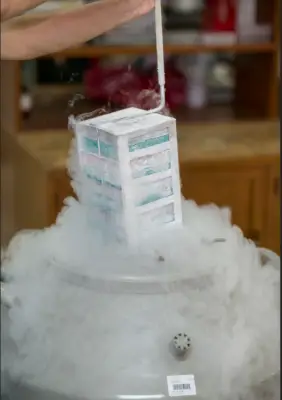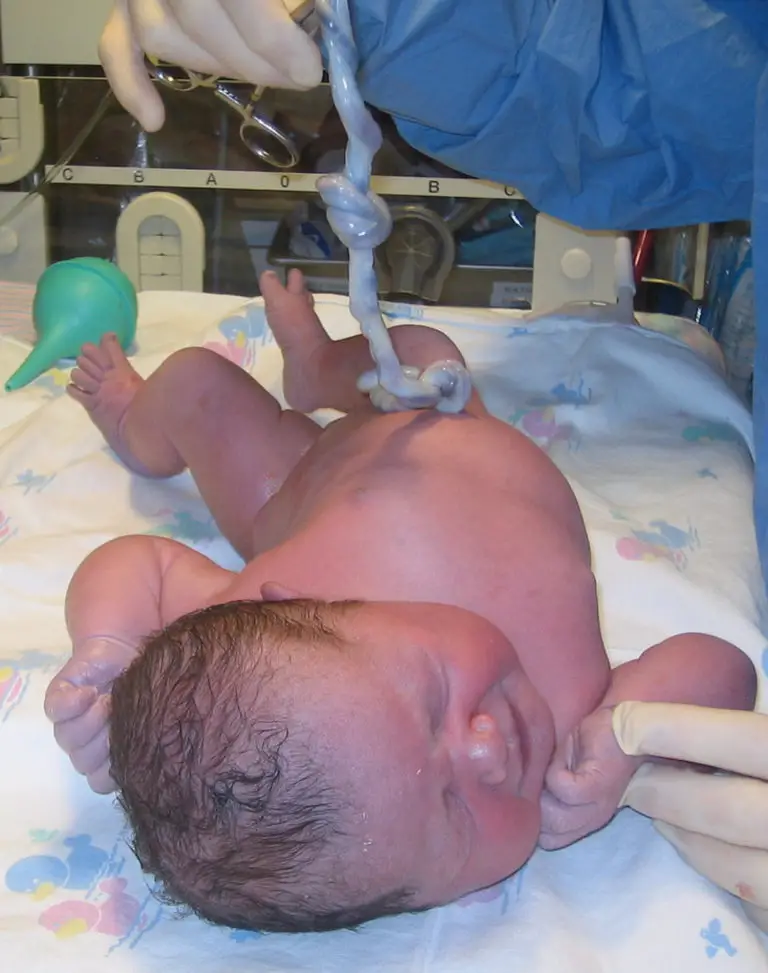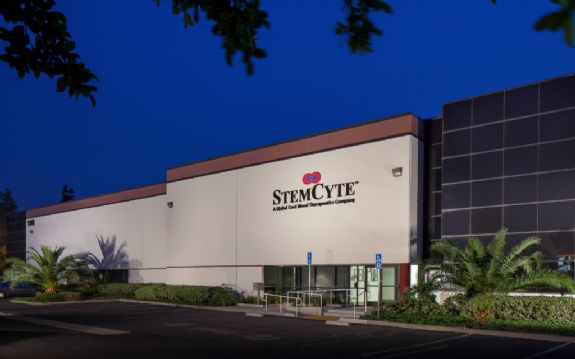LifeBankUSA
LifebankUSA
The company LifebankUSA was founded back in 1998. In the meantime, it went through a few successful acquisitions. LifebankUSA is accredited by the AABB and is registered with the FDA. Company’s headquarters are located in New Jersey (Cedar Knolls) and there is also where the cryopreservation storage facility is.
LifebankUSA is the only company on the market that offers to its clients to increase the number of stem cells banked by extracting blood not only from the umbilical cord but from the placenta as well. Placental tissue banking is another service only LifebankUSA provides at the moment.
Those services are into our Additional Services category in the cord blood banking reviews. Any company that offers additional services apart from typical cord blood banking ranks well in that category and LifebankUSA is one of them. Check that article, and also this one, to see what is important to look in a cord blood bank before deciding to store the cord blood of your baby there.
Collection Kit, Transportation, and Shipment
The LifebankUSA provides its clients a collection kit that consists of a sterile container to hold the placenta and an applicator to clean the umbilical cord before collecting the cord blood. The kit also contains a C-section adapter (in case the delivery is carried out this way). The company’s choice of equipment, anticoagulants and cell protection solutions are compliant with FDA recommendations and those of US Department of Health and Human Services.
Cell-protection solution preserves stem cells in time between the collection and processing of blood cord and placenta tissue.
The company organizes the transportation and shipment of collected cord blood through specialized courier service. The entire process is closely monitored by representatives of LifebankUSA.

LifebankUSA Methodology to Process The Umbilical Cord Blood
The process of preserving stem cells begins with removal of red blood cells. Erythrocytes do not have any therapeutic properties and, if present in large amount in the preserved specimen, can jeopardize the viability and cell count of stem cells. LifebankUSA, through the process of “red blood cell depletion” removes erythrocytes. The technology involves the sedimentation of red blood cells and their manual removal with the help of hetastarch (chemical compound). The result is impressive and LifebankUSA claims to have 99% purity of the specimen.
As a comparison, the majority of competitive companies achieve purity levels of approximately 80%, LifebankUSA says. Such specimens require additional preparation in case the stem cells are needed, which reduces the number of viable stem cells and their therapeutic effects. We did not receive any evidence of these percentages claimed by LifebankUSA.
The Process of Storage In LifebankUSA Facilities
After the collection kit arrives at LifebankUSA, all of its components are carefully and thoroughly inspected and verified by trained personnel. The LifebankUSA takes rigorous measures to prevent contamination of a specimen. The measures include operating in a sterile condition, with minimal exposure to air and a number of other safety precautions. We did not receive information from LifebankUSA if specific Good Distribution Practices are followed in these cases.
During the processing baby’s blood, plasma is extracted, erythrocytes removed, stem cells are separated and collected using top-notch technology (red blood cell depletion). Along the way, tests to determine the cell count, the number of CD34+ cells and their viability are performed.
Placental blood is processed in a separate lab since it requires a bit different techniques. The blood from the placenta is removed by using specialized pumps. After harvesting stem cells from a cord and placenta, they are placed in storage bags (with 4 segments in total).
After the specimen is processed, parents gets a certificate in which the cell count and their viability are described.
The abovementioned segmented storage bags allow physicians to decide whether they need just one portion of the stem cells or all of them in order to achieve optimal treatment results. The cells are cryopreserved at temperatures of approximately -190°C. Temperatures in cryopreservation are in Celsius scale. The temperature in the tanks is closely monitored continuously by LifebankUSA so the optimal conditions for preserving the stem cells are present at all times. The backup system keeps stem cells at the optimal temperature even in case of emergency of any kind (electricity cut-offs, natural disasters, etc.).
The Clinical Experience
The company LifebankUSA has released 46 cord blood units for the purposes of transplantation so far. It is the first company in the United States that reported a successful transplant from placenta-derived stem cells.
LifebankUSA supports clinical trials and research by running a program in which mothers in New York and New Jersey can donate their baby’s cord blood and placenta to help the research. This is an activity that is also performed by public cord blood banks, such as Carolinas.
The company is strongly devoted to maximizing the stem cells treatment potential by running research programs in the field of regenerative medicine. We explained what is regenerative medicine in this article.
LifebankUSA and Insurance
We understand that LifebankUSA is not running any more this benefit currently, so check here for an update of this additional benefit. In case the baby’s stem cells banked in the company do not engraft when called upon for transplant, the company was searching through its donor inventory for a unit that’s clinically appropriate (deemed like so by the recipient’s transplant physician). In case the match was found in the base, the LifebankUSA was making the unit available to the recipient free of charge.
The Family in Need Program In LifebankUSA
LifebankUSA ran in the past The Family in Need Program. The program was intended for families with a child who was a candidate for stem cell transplant at the moment and a newborn whose cord blood they want to bank with the intention to use it for a sick sibling. In such cases, LifebankUSA waives of all storage fees and enrollment for banking the donor’s cord blood.
Special Services of the Company
LifebankUSA offers its clients to collect stem cells from two sources: from the umbilical cord and from the placenta (LifebankUSA patented the technology of harvesting stem cells from placental tissue and has registered it with the FDA). Harvesting cells from two sources are done for a reason- more stem cells mean a higher probability of transplant success and a higher chance of survival. Storage bags with compartment technology offers a potential to give multiple treatments.
Placental blood contains 41% more of cells with a CD34+ marker- a particularly important cell population whose transplantation correlates with better survival rates. In the emerging field of regenerative medicine, the number cell populations with CD105+ (Mesenchymal Stem Cells) marker is doubled in combined placental/ cord blood specimens, compared to cord blood only specimens.
The clients of LifebankUSA, a private cord blood banking institution, have a chance to store a placental tissue as well. LifebankUSA performs well in our cord blood banking reviews because we consider important in our comparison calculation, any additional service offered beyond classical cord blood banking.
The tissue contains Mesenchymal Stem Cells (MSCs) and MSC-like cells populations. Although there are no approved uses of stem cells from placental and umbilical cord tissue. The therapeutic use is in the early stages of research and LifebankUSA actively supports and participates in clinical research in this field of medicine. It is expected that stem cells derived from the placental tissue will revolutionize the future of medicine. Long-term cryogenic preservation will make placental tissue available to whatever technology of cultivation and processing emerges in the coming years. Tissue banking should be considered as one more layer of protection LifebankUSA offers to its clients, and it is complementary to cord blood banking.
Payment Plans
Depending on the type of service parents chose (Cord Blood Banking, Placental and Cord Blood banking, Tissue Banking), LifebankUSA offered in the past a flexible payment plan (18, 25-year pre-payment plans and other modalities).
Advanced Biobanking
LifebankUSA advertises itself as a company which helps its clients prepare to take advantage of every opportunity that may emerge in the future. None of the banking services from the Advanced Biobanking program has approved medical use at the moment.
The program of Advanced Biobanking includes:
– Complete Placental Banking
LifebankUSA offers to preserve entire placenta for the future treatments that are likely to emerge in the coming years.
– Cord Vessel Banking
Arteries in the umbilical cord have the potential to be used in surgical treatment of heart disease. Cardiovascular diseases are the leading cause of death in the United States (and worldwide, with exception of the European Union, in general).
– Cord Blood Platelet Rich Plasma
The platelet-rich plasma contains hormones, proteins and other molecules that may be used in regenerative medicine for treating damaged tissues all over the body.






